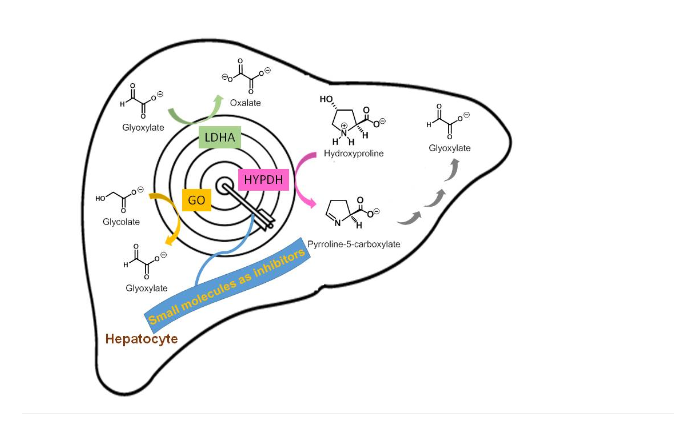Primary hyperoxalurias (PHs) are a group of inherited alterations of the hepatic glyoxylate metabolism. PHs classification based on gene mutations parallel a variety of enzymatic defects, and all involve the harmful accumulation of calcium oxalate crystals that produce systemic damage. These geographically widespread rare diseases have a deep impact in the life quality of the patients. Until recently, treatments were limited to palliative measures and kidney/liver transplants in the most severe forms. Efforts made to develop pharmacological treatments succeeded with the biotechnological agent lumasiran, a siRNA product against glycolate oxidase, which has become the first effective therapy to treat PH1. However, small molecule drugs have classically been preferred since they benefit from experience and have better pharmacological properties. The development of small molecule inhibitors designed against key enzymes of glyoxylate metabolism is on the focus of research. Enzyme inhibitors are successful and widely used in several diseases and their pharmacokinetic advantages are well known. In PHs, effective enzymatic targets have been determined and characterized for drug design and interesting inhibitory activities have been achieved both in vitro and in vivo. This review describes the most recent advances towards the development of small molecule enzyme inhibitors in the treatment of PHs, introducing the multi-target approach as a more effective and safe therapeutic option.

